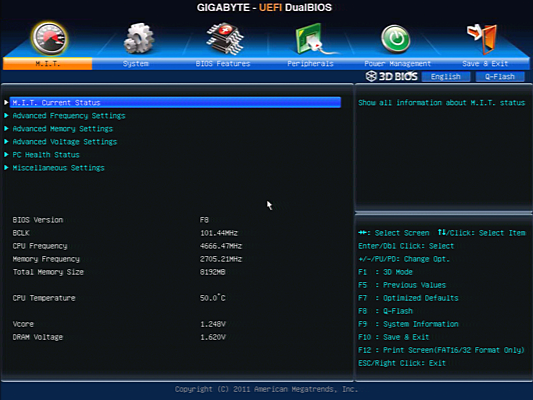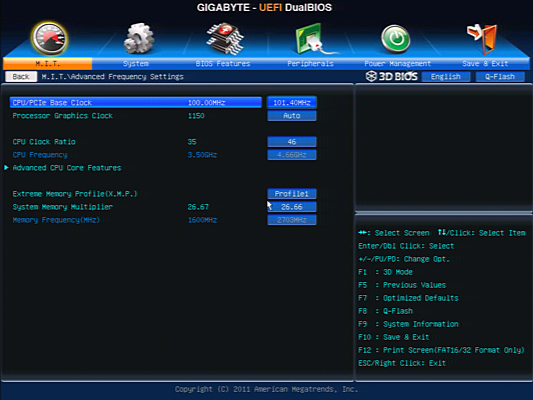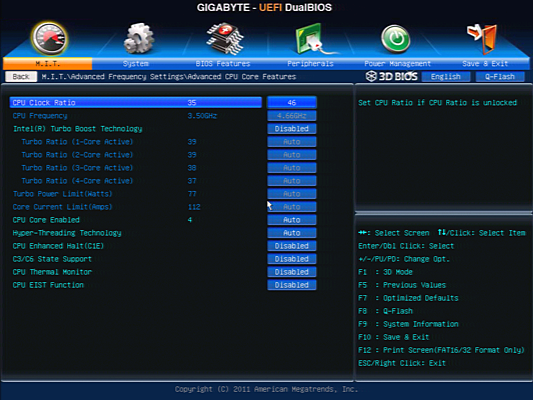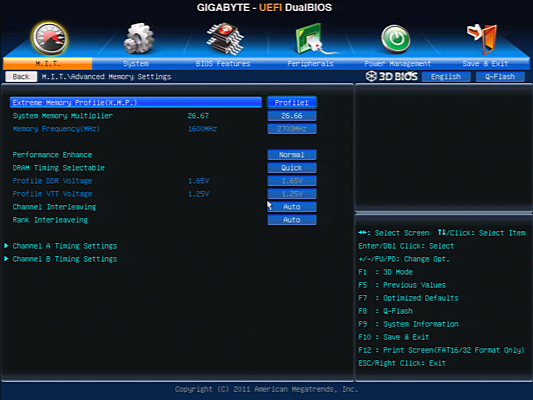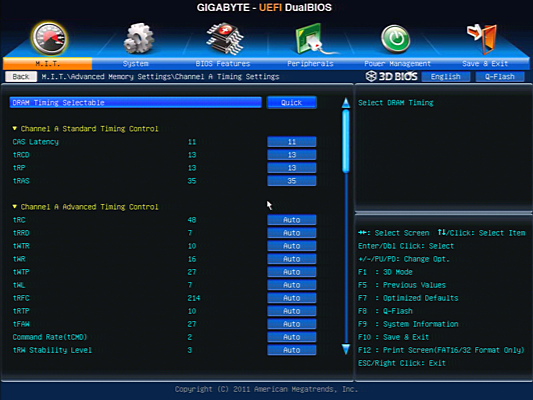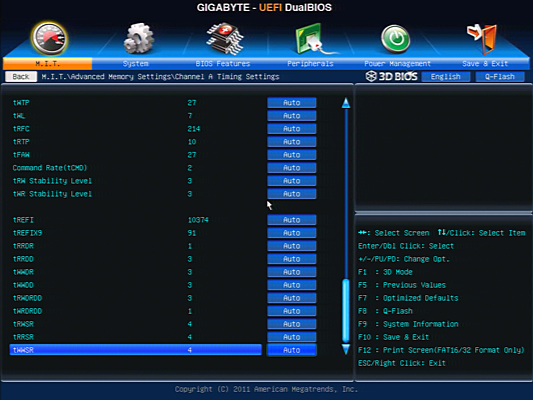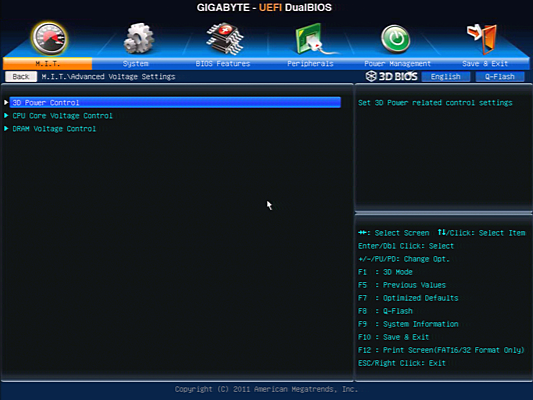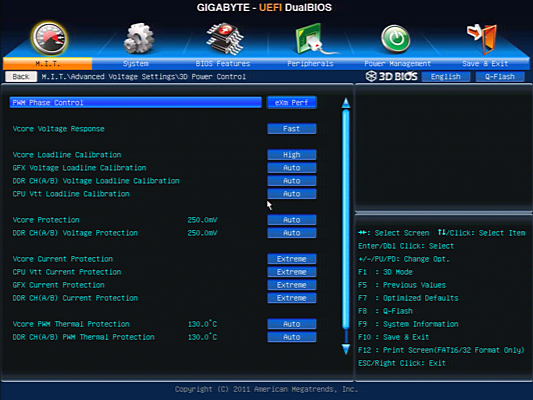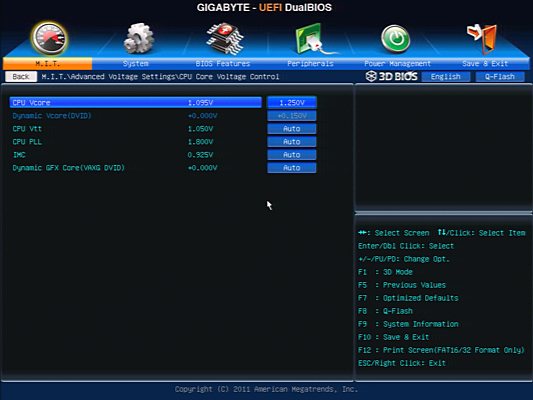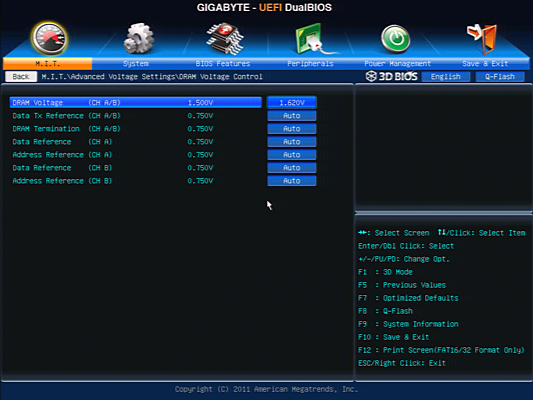Seven Sub-$160 Z77 Express Motherboards, Reviewed
Intel’s LGA 1155 interface is designed for mainstream buyers, yet the firm’s Ivy Bridge-based processors put it in the performance spotlight. We compare seven Z77 Express motherboards that deliver enthusiast-class performance at mainstream prices.
Z77X-D3H UEFI
Gigabyte’s Motherboard Intelligent Tweaker menu opens to reveal a few key status readings and a short list of submenus.
The Advanced Frequency Settings submenu might have otherwise been called a CPU menu, if not for the redundant memory multiplier setting. We reached a stable 4.66 GHz at our target 1.25 V. A submenu there reveals further CPU settings, including per-core and all-core multiplier options.
Setting Intel Turbo Boost technology to Disabled doesn’t completely disable it, but instead disables the CPU’s ability to manage its own clock speed in response to CPU load. This allowed us to more easily seek the maximum stable frequency for four-core loads without worrying about how much further the CPU would try to scale on its own in less demanding tasks.
The Advanced Memory Settings submenu contains the memory multiplier plus a few timing mode settings. Changing DRAM Timing Selectable from Auto enables the two Timing Settings submenus at the bottom of the page, where "Quick" links the timings of both channels and "Expert” enables per-channel timing settings.
An individual Auto option for each memory timing allows tuners to change only the timings they're familiar with. Setting an XMP profile on the previous menu causes each Auto timing to change from its original SPD to the corresponding XMP value.
Gigabyte’s Advanced Voltage Settings menu appears to be its biggest step toward inflating menu complexity. It merely contains three sub-submenu links.
Advanced Voltage Control is the one menu in Gigabyte’s UEFI structure with enough settings to justify its extra page. Of these, we found setting Vcore Loadline Calibration to High kept our CPU voltage stable under changing loads.
Get Tom's Hardware's best news and in-depth reviews, straight to your inbox.
While CPU and DRAM voltage levels could have been incorporated into the CPU and DRAM settings menus, Gigabyte could have satisfied our drive for simplicity by at least combining these into one extra page rather than two. The Vcore setting is fairly accurate for low-load conditions, and Loadline Calibration can be used to keep voltage stable at higher CPU loads.
After experiencing some extremely good two-DIMM memory overclocks, we stuck a voltage meter on the board and found that the actual voltage is 0.03 V higher than both the settings and readings from the board. That is to say, setting 1.62 V got us our desired 1.65 V, even though both the firmware and Gigabyte’s monitoring utility reported 1.62 V.
Up to eight custom UEFI configurations can be stored as user profiles on the Z77X-D3H.
-
Crashman SpadeMLAN performance .. ISC performance ... USB 3 .. well that's it then.Tom's Hardware has several controller comparisons, and publishes new ones frequently. So unless you think one of the boards has a broken controller, wysiwyg.Reply
The things that actually get screwed-up are typically related to the clock generator, multiplier control, memory timings and power options. -
jaquith I always appreciate your Articles! :) I know how much work you do to get them done.Reply
You're kidding - Biostar. I guess this article is not about the 'Best Sub-$160 Z77' MOBO's but about the best manufacturers sent you. The cheapest MOBO I recommend for the SB/IB (K) is the ASUS P8Z77-V which pops your 'unique' budget cap depending where you shop; found it here for $159.99 - http://www.gadgetneeds.net/asus-p8z77-v-atx-intel-motherboard/
Interesting you didn't get an ASUS P8Z77-V LK ~$120 which offers SLI. The ASRock Z77 Extreme4 and Gigabyte Z77X-D3H for the price aren't bad.
There's NO WAY I'm recommending Biostar in the forum, folks and myself would thing I've lost my mind. -
Crashman jimishtarIt would be nice to see the CPU voltage for every board when overclocking.1.25VReply -
gorillagarrett No peripherals performance tests? Those are the only tests that differentiate those motherboards from each other.Reply
Would really like to see how the UD3X Atheros Ethernet controller fares against the Intel and broadcom ones. -
Crashman gorillagarrettNo peripherals performance tests? Those are the only tests that differentiate those motherboards from each other. Would really like to see how the UD3X Atheros Ethernet controller fares against the Intel and broadcom ones.I'll let the integrated controller guy know you'd like to see those parts compared :)Reply -
gorillagarrett ReplyI'll let the integrated controller guy know you'd like to see those parts compared
Thank you! -
rolli59 I would have liked to see the Asus P8Z77V-LK version instead of the LX since it is better equipped.Reply
